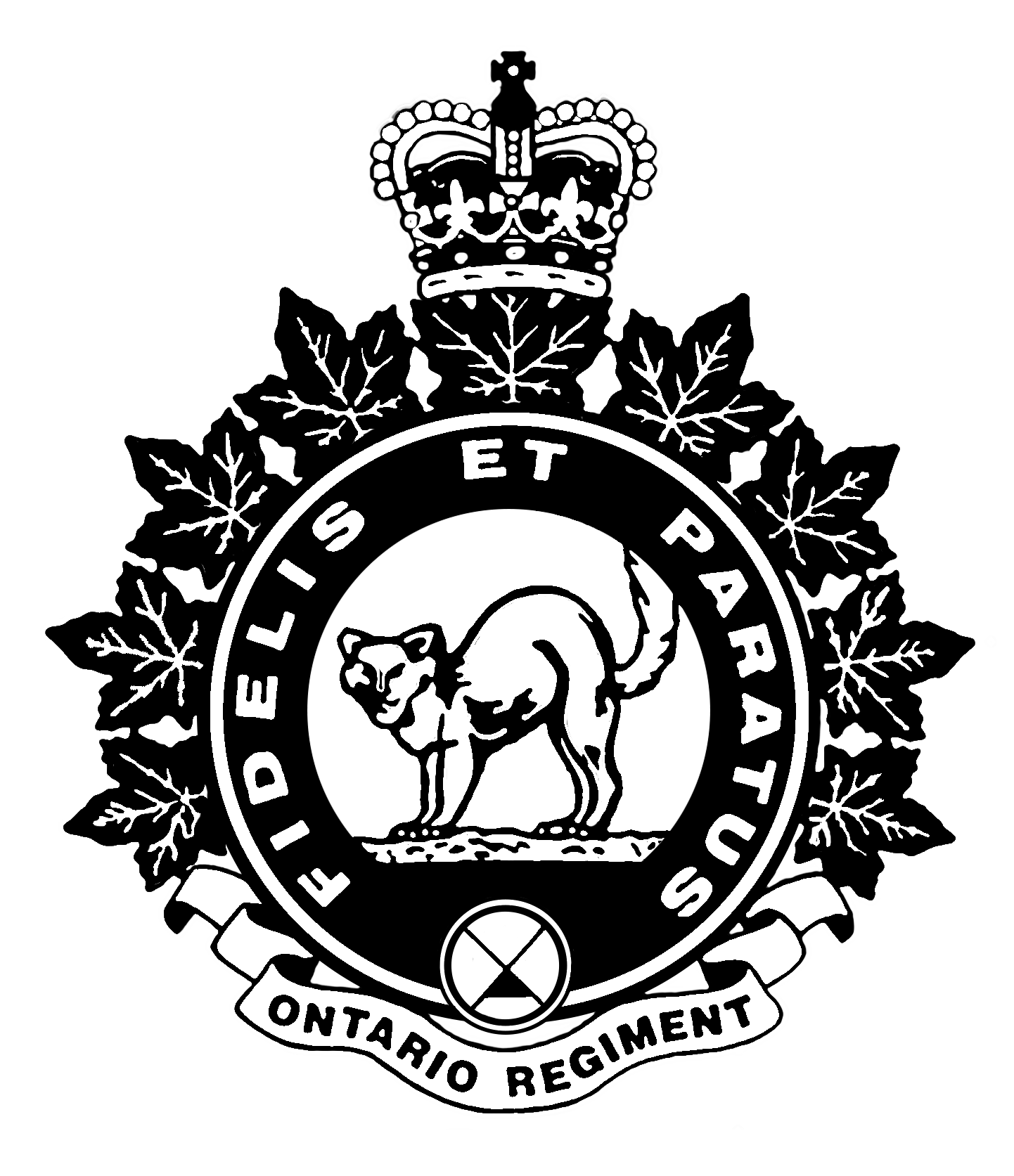December 1943 saw the Ontario Regiment engaged in four major battles. This article will only cover a brief overview of each.
In early December the Germans had settled into their Winter Line. The terrain on the west coast of Italy was not suitable for winter combat and therefore, the focus was on the east coast. Although not as mountainous as the west coast, the terrain on the east coast was not ideal for winter combat either. The constant rain made cross-country movement almost impossible, thus restricting vehicles to the roads. Any attempts to move off the roads inevitably led to the tanks getting bogged down.
The British 78 th Division had crossed the Sangro River and had reached the Moro River. They were rotated out of the line and replaced with the 1 st Canadian Division, with the support of the 1 st Canadian Armoured Brigade. The ultimate goal of this phase of operations for 1 CAB was to secure the area west of the town of Ortona, including the roads leading into town and the high ground over them. This included the area around Casa Berardi, a large three-storey farmhouse with smaller surrounding buildings.
On 8 December the Canadian infantry crossed the Moro, which was essentially dry at that time of the year. Elements of “C” and “A” squadrons of the Ontarios made their crossing on 9 December. “C” Squadron supported the Seaforth Highlanders of Canada on 11 December in an assault on a ridge below Berardi. The mud made tank support impossible and the Seaforths were forced to withdraw after a German counter-assault.
The Gully
The Gully was a natural feature and the Germans made use of it as a defensive position. It was about three miles long and ran parallel to the Ortona–Orsogna road, on the south side, at a distance of 200–300 yards. At the Adriatic end, The Gully was about 200 yards wide and it narrowed to about 80 yards farther inland. The average depth was 200 feet.
The attack on the Gully began on 13 December with “B” Squadron supporting a company from the West Nova Scotia Regiment and “C” Squadron working with the Seaforth Highlanders of Canada. “B” Squadron and the WNSR surprised the Germans, leading to the surrender of several dozen enemy soldiers and the destruction or capture of four Panzer Mark IVs. This initial success came to a halt due to a ravine that the
tanks could not cross.
The second round came on the afternoon of the 13 th when a much-depleted “C” Squadron and “A” Company of the Seaforths made their assault. “C” Squadron was down to four mobile tanks and “A” Company was reduced to 40 soldiers. This attack took place at a different location where the tanks could operate. Again, the Canadians surprised the Germans, taking more prisoners and destroying more enemy tanks. Despite this success, a lack of manpower prevented the Canadians from pushing on to Casa Berardi and they were compelled to withdraw.
Casa Berardi
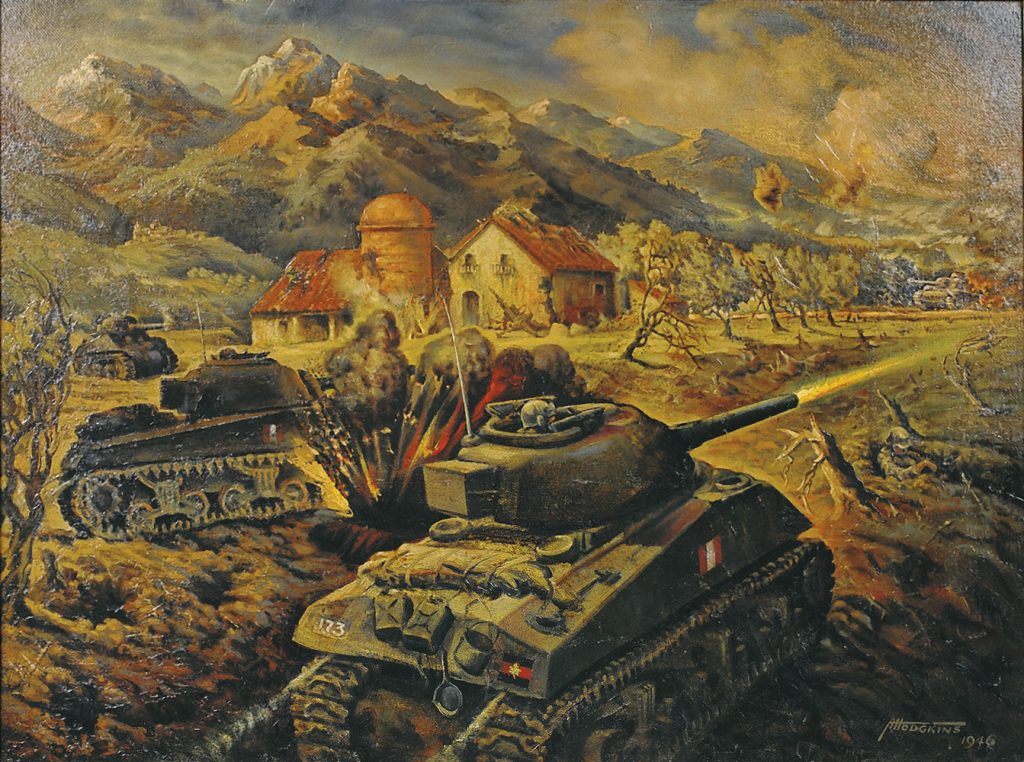
On the morning of 14 December, recovery efforts had made seven tanks available to Major Smith of “C” Squadron. Another attempt to take the Gully and Casa Berardi with the Royal 22 nd Regiment (the Van Doos) was set for that day. Captain Paul Triquet was in command of this group of Van Doos.
The tank-infantry team made progress that day, with the Ontarios destroying several German Mark IVs.
Now down to four running tanks and about 15 Van Doos after a hard day of fighting the Canadians halted for the night about 200 yards from Berardi. The wounded were gathered in one of the Casa Berardi farm buildings. Ammunition was running low. Some tank 75mm rounds were salvaged from one of the disabled Shermans, but this was not enough.
The morning of 15 December was quiet, but the situation heated up at around noon when the Germans began shelling the area around Berardi. An attack by German paratroopers in the mid-afternoon was halted by incoming shells from the 392 nd Battery, 98th Field Regiment (Surrey & Sussex Yeomanry Queen Mary’s), Royal Artillery.
After another day’s fighting, supplies, especially ammunition, for “C” Squadron were getting perilously low. The squadron was still cut off and regular supply vehicles could not get to them. Captain Leonard Knowles of “B” Squadron loaded up seven tanks with as much ammunition as could be packed in to re-arm “C” Squadron. The resupply tanks arrived overnight and Captain Knowles kept his vehicles in the area around Berardi for extra support. He patrolled the area near a bridge on the San Leonardo-Villa Grande road in an effort to keep the Germans from blowing it. The “B” Squadron tanks engaged groups of Germany infantry and destroyed several trucks.
The situation was more stable over the next few days and “C” Squadron was able to return to the Regimental harbour area on 19 December.
Ortona
Ortona was a fishing town and port on the Adriatic. With the Ortona–Orsogna road in Allied hands by 19 December, the way was open to take Ortona. The Eighth Army was planning to use the town as a maintenance and rest centre. British intelligence believed that the Germans would withdraw from Ortona, but instead they stayed and fought intense street-by-street, house-by-house battles against the Canadians.
The Ontarios’ role in the battle was to support three Canadian regiments – the Hastings and Prince Edward Regiment, the 48 th Highlanders of Canada, and the Royal Canadian Regiment – in cutting off Ortona from the west and northwest.
This operation began on the morning of 23 December. Tough fighting took place over the next few days with the objectives being taken up to 27 December. On the same day the Germans pulled out of Ortona and the Canadians had full control of the town on the 28th .
The battle for Ortona was over, but there was one more fight before the month was done.
Point 59
Following their withdrawal from Ortona, the Germans moved north to an area known as Trig Point 59, which provided a commanding view of Ortona and any troops moving out of the town towards Point 59. “B” Squadron rolled off on 28 December, supporting the Carleton and York Regiment, in a move north toward Point 59. They met up with the Three Rivers Regiment and the 2 nd Canadian Infantry Brigade on
the route. This large force was slowed by German machine gun and mortar fire, and mines which took a toll on the Ontarios’ tanks. The Point 59 operation continued until 31 December.
Conclusion
The Ontarios lost twelve members in December, one of the most deadly months of the war for the Regiment.
Corporal Charles Mann and Trooper Frederick Ware were killed on 10 December. Mann was living in Toronto and working as an auto mechanic at the outbreak of the war. He was one of the group of recruits from Toronto who joined the Ontario Regiment in September 1939. Ware originally joined the Calgary Regiment as he was from Eagle Hill, Alberta. His service record recorded him as being a farmer and a truck / tractor driver. Ware was a member of the 1st Canadian Armoured Brigade HQ at the time of his death, but was attached to the Ontario Regiment as the driver for the Regiment’s padre, Captain Waldo Smith. Ware was wounded when by an explosion when a nearby tank drove over a mine. He died of his
wounds later that day.
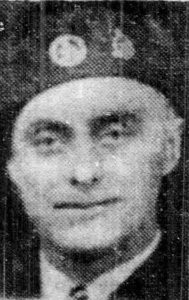
Corporal Ernest Hill was killed on 11 December. Hill was living in South Porcupine, Ontario and working as a steel sharpener when he joined in 1940. He was a veteran of the British Army in the First World War. Trooper Morris Krasutsky of Oshawa, Ontario was killed on 12 December. He was one of the original Ontarios, having joined the Militia Ontario Regiment in June 1939 and immediately signed-on for active service at the outbreak of war.
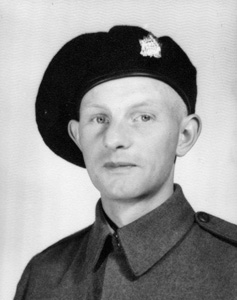
Troopers Olav Luraas and John Millar were killed on 14 December. Trooper Luraas had spent most of his life in Archerwill, Saskatchewan, but was living in Brantford, Ontario and working as a caterpillar operator at the time of his enlistment in September 1941. Trooper Millar, known as “Buddy”, was residing in Toronto and working as a machinist’s helper when joined the army in February 1941.
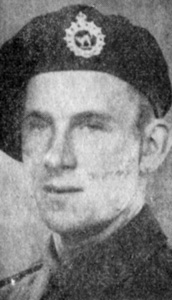
Trooper Morley Spencely was killed on 16 December while delivering supplies to “C” Squadron. He was living in Uxbridge and working on a farm when he joined as one of the original Ontarios in September 1939.

Two more Ontarios were killed on 17 December: Lieutenant Stuart Campbell and Trooper Andrew Wilson. Lieutenant Campbell was killed when a mortar shell landed on his turret. He was a resident of Toronto, Ontario when he joined the army in 1942 after graduating from Ontario Agricultural College. Trooper Wilson, from Matachewan, Ontario, was killed by a sniper while working on the recovery of a tank that had been disabled by a mine. He was a machine operator for a mining company before the war,
Another two Ontarios were killed on 23 December: Corporal Frederick May and Lance Corporal Norman Welch, both from Toronto. Corporal May was one of the Regiment’s cooks and was working as a garage manager before he joined the army in July 1940. Lance Corporal Welch was wounded on 10 December, but died of wounds on 23 December. He was working as a sales and collection agent for an insurance company prior to the war, although his attestation paper also indicates he was a motor mechanic. Welch was also one of the original Ontarios who signed up in September 1939.
The 31st of December saw one more Ontario lose his life – Lance Corporal Chester Sheppard, a pre-war office clerk from Toronto. He was a co-driver of a tank and was wounded when the tank drove over a mine during the fighting at Point 59. He died the same day. Sheppard’s twin brother, Gordon, was also in the Ontario Regiment at the same time.
All are buried in the Moro River Canadian War Cemetery, with the exception of Lance Corporal Welch who is buried in the Bari War Cemetery.
Several medals were awarded as a result of the battle at Berardi. The ultimate was the awarding of the Victoria Cross to Captain Paul Triquet of the Royal 22nd Regiment. Three members of the Ontario Regiment received medals for their actions in December. Major Hershell A. “Snuffy” Smith was awarded the Military Cross. Smith, of Dauphin, Manitoba, was a member of the Permanent Force before the war.
The citation noted that by his “initiative, bravery and sheer determination he was able to hold on to vital ground.” Captain Leonard I. Knowles was also awarded the Military Cross for his “initiative and conspicuous gallantry” while resupplying “C” Squadron. Knowles was a prewar member of the Ontarios and was living in Oshawa while working at General Motors at the outbreak of the war. Sergeant Ross G. Clarke won the Military Medal. He and his crew had three tanks blown up under them on 15 December. After evacuating his crew from the third tank, he set out on foot under heavy enemy fire to find the squadron leader to inform him of the German positions. Despite being wounded on the way, he found the major’s tank and directed fire on the German guns. The citation called it a “most conspicuous act of bravery and extreme devotion to duty in the face of the enemy.”
Corporal Cecil L. Hughan was awarded the British Empire Medal after the battle at Point 59. His tank had been disabled by a mine that killed the co-driver and wounded the driver. Corporal Hughan pulled the wounded soldier from the vehicle and carried him to safety while under enemy machine-gun and mortar fire.
“Bloody December” for the Canadians had finally come to an end. The Ontario Regiment received the following battle honours for December 1943: “The Gully”, “Casa Berardi”, “Ortona” and “Point 59”.
Rod Henderson
Rod Henderson is the Regimental Historian of the Ontario Regiment. He served as a Sergeant in the Regiment and is the author of “Fidelis Et Paratus: The History of The Ontario Regiment RCAC”.

